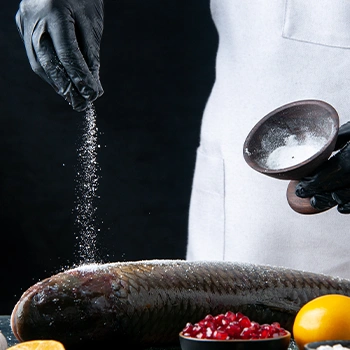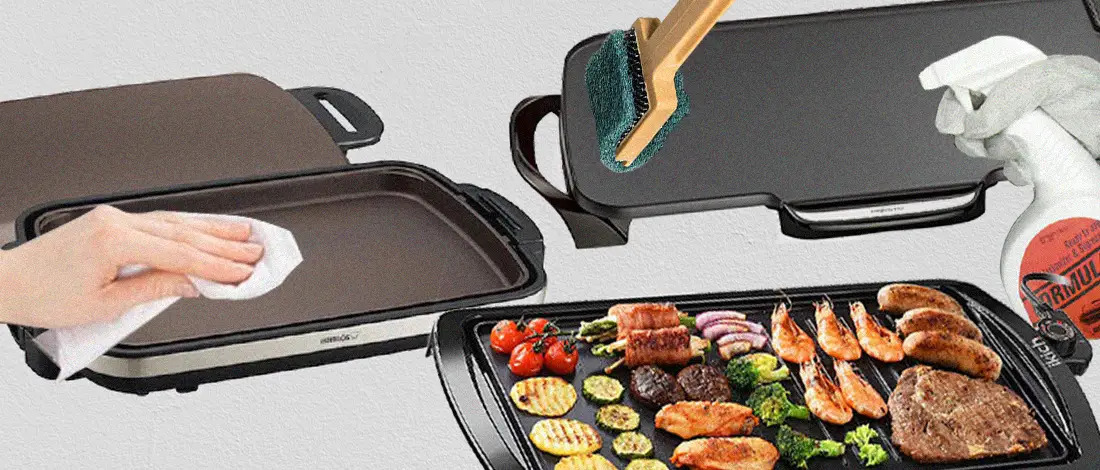Trout is a delicious, healthy fish like salmon. One of the best – and my personal favorite – ways to make trout is smoking it.
I have done it so many times over the years and mastered the methods that I’m pretty sure I can get it done with my eyes closed now.
Quick Summary
- Smoking trout involves preparing the fish by cleaning and filleting, then curing it to release moisture.
- Two methods for smoking trout are hot and cold smoking; hot smoking cooks the fish, while cold smoking cures it without cooking.
- After smoking, the trout should have lost 15-20% of its weight due to moisture loss, indicating it's ready to eat.
You will find a detailed explanation listed below on how to smoke trout, from preparing it to smoking it, including the different smoking methods.
Prepare The Trout

Before cooking, grilling, smoking, curing any fish, including trout, you must prepare it well. Here is what you can do to prepare your trout:
- Make sure it is clean. Wash it under cool water to ensure any blood, bacteria, and dirt around it is removed [1].
- Pat it dry. Even though it will release liquid further in the process, you want to avoid having any extra water around it.
- Cut your fillets. You can smoke the whole trout, so if that’s what you prefer, skip this step; however, filleting your trout will improve the process, flavor, and overall result.
- You do not have to debone the trout at this point. If you find it easier to do before moving further, then you can.
- One of the most necessary steps is to weigh your fillets now. That will help you determine how much water loss you have had after smoking to ensure perfectly cured and smoked trout.
Cure The Trout
Curing the trout is probably more important than the actual smoking step. When you cure your trout, the moisture and liquid are released from the trout.
It is the primary drying method of smoking. There are two ways to cure trout [2]:
1. Dry Salt Cure For Smoking Trout

Dry salting typically uses a sea salt rub instead of iodized salt to avoid bitterness.
You can make a mixture of a 1:1 ratio of salt and brown sugar. If you want it less salty and prefer a balanced taste, use a ratio of 1:2 of salt to sugar.
The basic recipe would require 2 cups of salt, but adjust the measurements depending on the size and quantity of your trout.
The more cure you use, the better and more efficient results you will get of the cured trout, and you will have a longer shelf-life.
You can sprinkle a generous amount on the bottom of a container or tray that will fit your trout. Place your fish over the mixture, and sprinkle the rest over; you can rub it in if you prefer.
You can sprinkle a generous amount on the bottom of a container or tray that will fit your trout. Place your fish over the mixture, and sprinkle the rest over; you can rub it in if you prefer.
Leave it for a minimum of 12-24 hours in the refrigerator, and drain the liquid as needed as the trout will release a lot of moisture.
2. Liquid Brine Cure For Smoking Trout

You can make a salt brine with saltwater – add sugar to balance the saltiness. Chill the brine before you add the fish or use cold water.
Submerge your trout entirely into the brine; use a plate for weight if needed. Leave it in the fridge for 12-24 hours. The longer you let the curing process take place, the better your results will be.
Remember to keep an eye on the trout and pour out some liquid as needed if your container is not high enough to hold more moisture as the trout releases it.
Rinse The Trout
After curing the trout, you want to rinse it well with clean and cold water. That will help remove any excess saltiness and all the fish’s liquid during the process.
After rinsing, place your trout over a paper towel and pat it dry even further. You want it as dry as possible for the best results.
Smoking The Trout
There are 2 methods to smoke trout: hot smoking and cold smoking.
1. Hot Smoking Trout

Hot smoking trout is a method of cooking the fish.
You can get the smoky flavor by adding seasonings with smokey ingredients like smoked paprika, or you could even use liquid smoke.
You can cook the trout in your oven or on the stovetop. Using a lid over the pan or covering the trout with foil in the oven will help to retain the smokey flavor in the steam.
You want to open it up after a few minutes so that more liquid can evaporate from the trout – as is the purpose of smoking.
Using the hot smoking method, another way to smoke trout is simply grilling your trout on the BBQ.
The charcoal and smoke from the BBQ fire automatically give the fish a smokey flavor, and the liquid dries out. You can, of course, add additional smokey seasonings before grilling your trout.
2. Cold Smoking Trout

Cold smoking takes slightly longer than hot smoking and requires a little bit of extra effort.
It is worth the effort, and you won’t regret a second of the process. The cold smoking method will not cook your trout, but it does cure it – releasing moisture [3].
To avoid spoilage, you want to cold smoke tour trout at less than 50°F. The best way to do that is to start your cold smoker overnight.
You will need a steady stream of smoke that will go on for an extended period.
You will also need a container that can act as the chamber for the stream of smoke. You will use wood dust and burn it at a low temperature and steady pace.
Let this process go on for around 12-24 hours. Several YouTube videos show you exactly how to use a smoke chamber and even innovatively make one at home.
Place the fillets in the fridge to develop flavor after 12 hours, and after that, cold-smoke it for another 12 hours. That way, you will get the ultimate smoked trout!
Weigh Your Trout After Smoking

Once your trout has sat through the smoking process, and you find that it is probably ready to eat, make sure to weigh it again.
The trout should have a weight loss of approximately 15-20%. If it has reached that percentage range, it is safe to eat. If not, you may want to let it smoke a bit longer to release further moisture.
You can also put it in the oven with the extractor fan and no heat to create some dehydration.
Weigh your trout again. You can slice and debone it before serving if it has reached the goal.
There are very few smoked foods that come close to the taste of smoked trout – as Jean-Anthelme Brillat-Savarin said before his passing, “In the hands of an able cook, fish can become an inexhaustible source of delight.” [4]
Related Articles:
References:
- https://www.healthline.com/nutrition/eating-raw-fish
- https://www.britannica.com/topic/fish processing/Curing#:~:text=Curing%20reduces%20water%20activity%20through,(called%20a%20wet%20stack).
- https://pubmed.ncbi.nlm.nih.gov/34828803/
- https://www.cooksinfo.com/jean-anthelme-brillat-savarin








